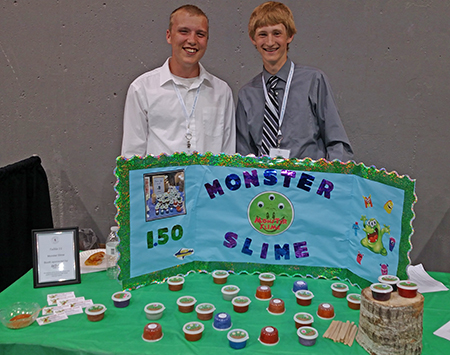Entrepreneurship and STEAM a logical connection: Focus on science
Youth entrepreneurship programs integrate the educational concept of STEAM (science, technology, engineering, arts and math). Let’s focus on the connection between entrepreneurship and science.

Did you know there is a strong connection between entrepreneurial thinking and STEAM (science, technology, engineering, art and mathematics)? Both concepts result in individuals who take thoughtful risks, engage in experiential learning, persist in problem-solving, embrace collaboration and work through the creative process. Every aspect of STEAM has a connection with entrepreneurship. This article focuses on the connection between entrepreneurship and science. To read about the connection between entrepreneurship and technology, see “Entrepreneurship and STEAM a logical connection: Focus on technology” from Michigan State University Extension.
STEAM is an educational approach to learning that uses science, technology, engineering, the arts and mathematics as access points for guiding student inquiry, dialogue and critical thinking. STEAM is an educational initiative created by the Rhode Island School of Design that adds the arts to the original STEM framework. According to the Rhode Island School of Design, “The goal is to foster the true innovation that comes with combining the mind of a scientist or technologist with that of an artist or designer.” The addition of the arts to the original STEM framework is important as practices, such as modeling, developing explanations and engaging in critique and evaluation (argumentation), have too often been underemphasized in the context of math and science education.
The connection between science and entrepreneurship is strong. One of the cornerstones of entrepreneurship is business idea generation. One common method of idea generation for new products or services is to design a solution to a given problem. Finding solutions to problems is a foundation of every field of science. There are numerous examples of real life case studies exemplifying this connection. The same rings true for 4-H youth entrepreneurship programs delivered by Michigan State University Extension, as demonstrated in the following two case studies of 4-H youth entrepreneurship programs in Rapid River, Michigan (Delta County).

- Diesel sticks. This group of young entrepreneurs took an idea from a How to Make a Fire Piston YouTube tutorial to solve the problem of outdoor enthusiasts who want an easier way to start a fire. Their product used science to harness the power of compacted air to fire starting ember quickly. After a copious number of prototypes, using trial and error, the group finally developed a working product.
- Monster slime. This innovative group used a chemical reaction between glue and borax to produce a highly flexible, cross-linked polymer. A simple science experiment created a fun and marketable product. They adapted the recipe and used “sparkle glue” to give the new product a little bling.
Incorporating entrepreneurship with STEAM is easy with the wealth of information available from DIY (Do It Yourself) science sites such as Pinterest and YouTube. Using current technology kids relate to can provide the spark needed to initiate new ideas for potential business opportunities. They can provide the knowledge base needed to develop products and service based in science.



 Print
Print Email
Email







